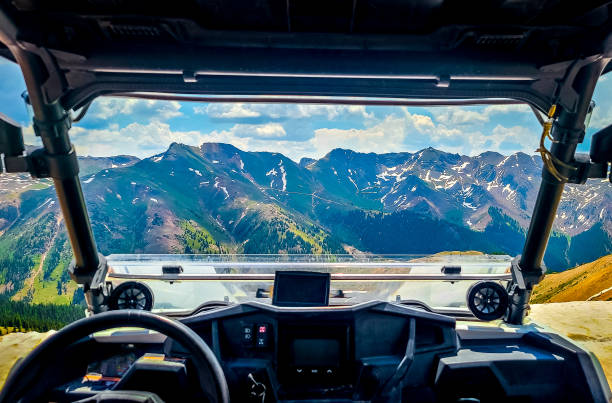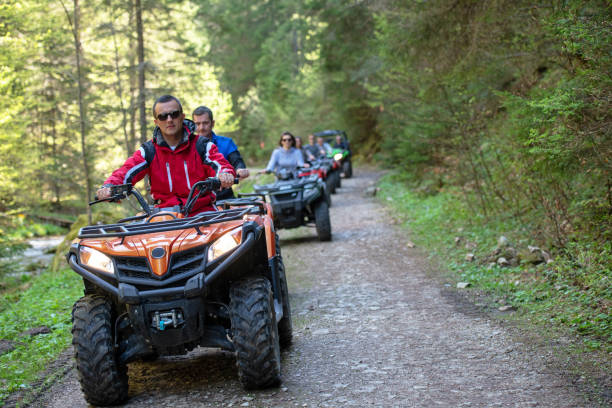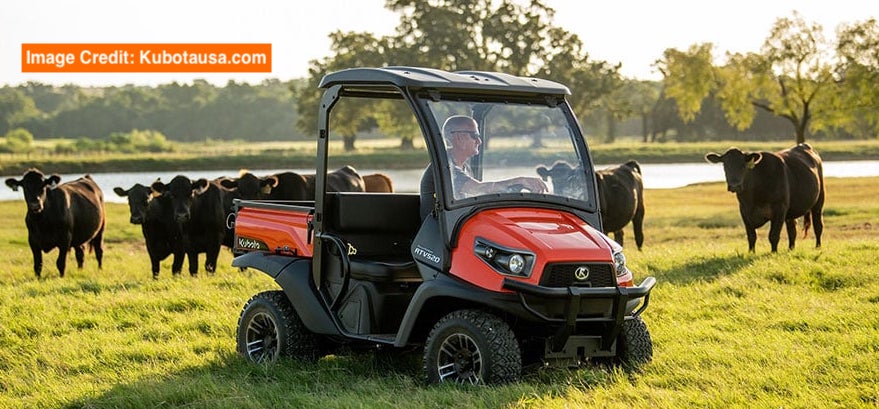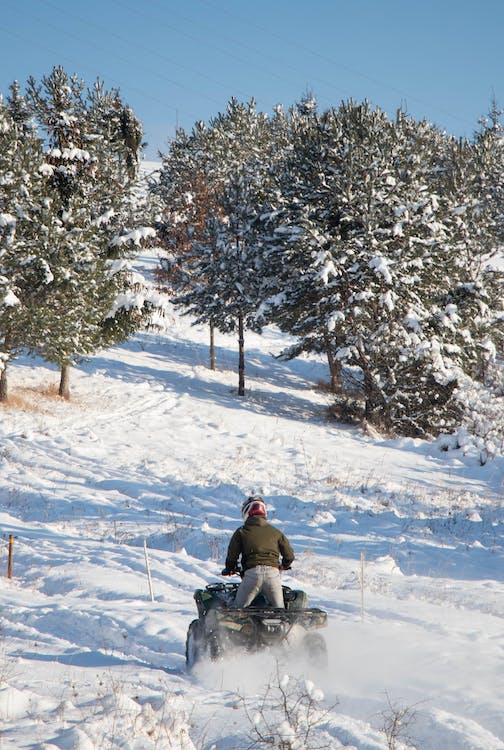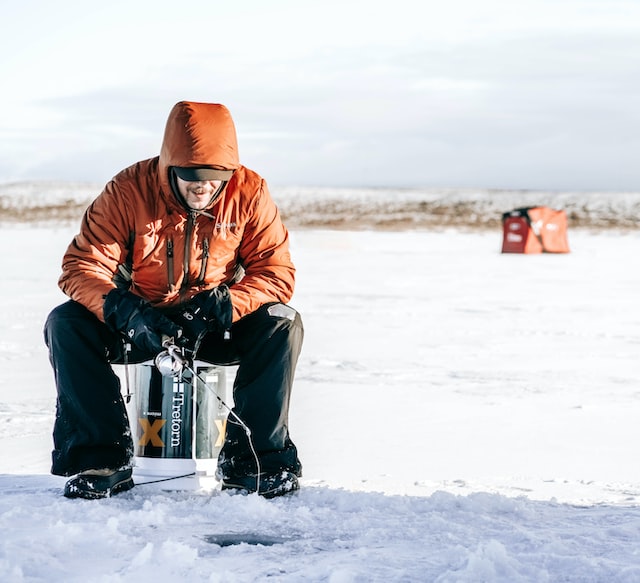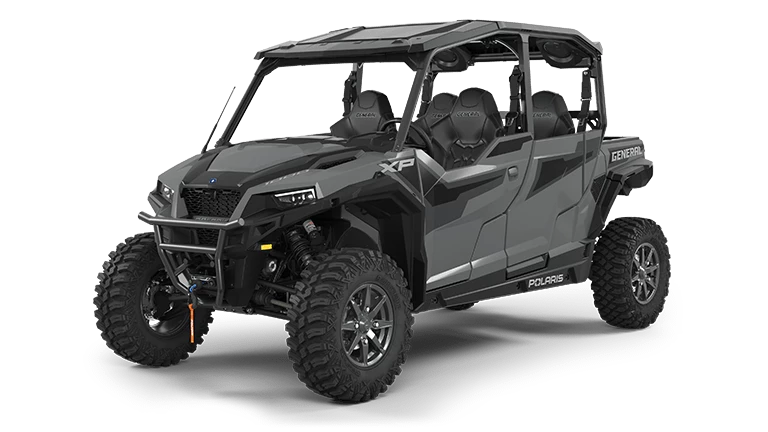As an Amazon Associate I may earn a commission from qualifying purchases at no additional cost to you.
Maintaining all-terrain vehicles (ATVs) and side-sides (SxS) involves strategically timed care routines that focus on preserving performance and extending longevity.
Seasonal ATV care ensures that these vehicles are prepared for various weather conditions and terrains, protecting essential components from potential damage.
In contrast, side-by-side vehicles often benefit from quarterly service checks that address a broader range of preventive maintenance tasks regardless of seasonal changes. This approach can result in improved reliability and efficiency.

Proper ATV maintenance can involve cleaning, lubrication, and inspection of parts that may suffer due to harsh environmental factors. This proactive approach helps identify wear and tear early, reducing the risk of breakdowns during use.
Side-by-side vehicles, with their robust designs and potential for diverse applications, demand a more consistent service schedule. Quarterly check-ups contribute to safety and operational readiness, minimizing unexpected repair costs and downtime.
Understanding the nuances between seasonal and quarterly maintenance not only boosts vehicle performance but also protects the investment made in these adventurous vehicles.
Whether for recreational enjoyment or utility work, regular care tailored to the specific type of vehicle ensures persistent functionality and peak performance.
This simple commitment translates into longer periods of reliable and thrilling rides across rugged terrains.
Understanding ATV and Side by Side

All-terrain vehicles (ATVs) and Side by Sides (SxS) offer distinct benefits tailored to varied outdoor activities and terrains. While both are designed for off-road use, they differ primarily in their design and potential applications.
Defining ATVs and Side by Sides
ATVs, often referred to as “quads,” are single-rider vehicles with handlebars for steering. Equipped with four wheels, they are nimble and suitable for individual riders.
Side by Sides, also known as Utility Task Vehicles (UTVs), typically feature steering wheels and side-by-side seating for two or more passengers. Their larger size allows for additional features such as safety bars and cargo space.
Both types are built for rugged conditions but cater to different needs.
ATVs are often chosen for recreational riding, agricultural tasks, and light duty, whereas SxS vehicles are preferred for utility tasks, family outings, and more demanding environments. Understanding their design differences is crucial for selecting the right vehicle.
Differences in Uses and Capabilities
The primary difference between ATVs and SxS vehicles lies in their usage.
ATVs are renowned for their agility and speed, making them ideal for maneuvering through tight trails and undertaking adrenaline-filled racing. SxS vehicles, with their enhanced stability and passenger capacity, excel in transporting goods and people over difficult terrain.
SxS vehicles are often used in industries such as agriculture, construction, and outdoor tourism due to their practical build and extensive cargo capacity. They also come with additional safety features such as ROPS (Roll Over Protection Structure). ATVs, being more compact, are less suited to heavy load tasks but provide a more thrilling ride experience.
Market Overview
The market for ATVs and SxS vehicles has grown significantly, with manufacturers offering a diverse product portfolio to cater to both niche and broad consumer requirements.
Key players in the industry continually innovate, offering models designed for specific terrains and purposes, such as mud, sand, or rocks.
International demand, especially in regions with vast natural landscapes, is notable. The versatility and durability of these vehicles make them popular worldwide, influencing both recreational and commercial sectors. As off-road activities gain traction, this market is poised for further expansion.
The Importance of Regular Maintenance
Regular maintenance is crucial for all-terrain vehicles (ATVs) and Side by Sides. It helps extend lifespan, ensure safety, retain value, and maximize financial returns. Ignoring scheduled maintenance may lead to costly repairs and diminished performance.
Extending Vehicle Lifespan
Frequent check-ups can significantly prolong the life of an ATV or Side by Side.
Lubrication, fluid checks, and timely replacement of parts prevent wear and tear. Proper care reduces the risk of sudden mechanical failure and unexpected breakdowns.
Regular inspections help in identifying early signs of damage that could worsen over time. A well-maintained vehicle serves efficiently for years, reducing the need for a premature purchase.
Maintaining Performance and Safety
Performance remains optimal with routine servicing, ensuring that the vehicle operates at its best.
Proper tire pressure, brake functionality, and suspension checks contribute to better handling. Safety measures, such as examining lights and ensuring clear visibility, reduce accident risks.
Meanwhile, checking the engine and transmission ensures powerful performance. Not only does this improve ride quality, but it also keeps riders safe, which is paramount.
Value Retention and Gross Profit Implications
A consistently serviced vehicle retains its value longer, beneficial for resale. Maintenance records can increase buyer confidence, potentially leading to higher sales prices.
This influences the gross profit positively by reducing depreciation impact. In business contexts, maintaining a fleet optimizes net income by avoiding unexpected maintenance costs.
Investing in regular maintenance ensures financial gains and maintains operational efficiency.
Seasonal Maintenance Tips for ATVs
Thorough seasonal maintenance of ATVs ensures optimal performance and safety throughout the year. Regular checks and servicing help to prevent damage caused by environmental factors like cold, heat, and moisture.
Winter Prep and Storage
During winter, ATV owners should focus on proper storage and protection from extreme cold.
Fuel stabilizers help maintain fuel quality over the winter months. Owners should clean the ATV thoroughly to remove dirt and debris, reducing the risk of corrosion.
Storage in a dry, secure place is essential. To avoid flat spots, it’s beneficial to elevate the ATV off the ground or occasionally rotate the tires. Battery maintenance is also important; disconnect and store it in a warm place or use a trickle charger.
Spring Awakening and Servicing
Spring is the time for revitalization and comprehensive checks.
Start with inspecting the condition of belts, brakes, and suspension. Refill any low fluids, like oil and coolant, and replace or clean the air filter. This is also the perfect time to lubricate all moving parts.
Checking the tire pressure is crucial, given that temperature changes can affect it. Reconnect the battery if it was removed during winter storage. A test ride will help identify any noticeable issues before heading into the riding season.
Summer Usage and Overheating Prevention
As temperatures rise, overheating becomes a risk.
Regularly checking and refilling coolant levels helps manage engine temperatures. To prevent overheating, keep an eye on the radiator, ensuring it remains clean and unobstructed by dirt or debris.
Since summer is a popular riding season, frequent off-road trips may bring ATV riders into contact with forested areas. It’s important to respect forest management guidelines by staying on approved paths and being aware of fire risks.
Autumn Checkup and Weatherproofing
Autumn introduces the need for weatherproofing and preparing the ATV for the challenges of the cold months ahead.
Begin by checking the status of electrical connections and making sure they are secure and corrosion-free. Tire and brake inspections ensure safe rides, as wet and slick conditions are common in fall.
Applying water-repellent sprays to key components can prevent moisture-related damage. This time of year is also ideal for reviewing and updating safety gear, ensuring both vehicle and rider are ready for any autumn adventures.
Quarterly Service Strategies for Side by Sides

Routine maintenance throughout the year ensures Side by Sides operate efficiently and safely. Each quarter presents unique challenges and needs that require tailored care to align with manufacturing capacity and retail sale timing.
Q1: Post-Winter Revival
As winter ends, focus on rejuvenating Side by Sides from potential cold-weather impacts.
Begin with a thorough cleaning to remove salt and grime, which can corrode parts. Inspect and lubricate moving parts like chains and bearings to prevent rust.
Check the battery life and recharge or replace it if necessary. Tire pressure often drops in cold weather, so ensure it’s at the recommended level.
Performing an oil change and replacing the oil filter helps maintain engine health. Essential fluid levels such as brake and hydraulic fluid should also be examined and replenished if needed.
Q2: Mid-Year Inspection
Mid-year, take the opportunity to conduct a detailed inspection to ensure all systems function correctly.
Pay attention to the braking system, ensuring pads aren’t overly worn and the system is responsive. Examine the vehicle’s suspension and shock absorbers for wear and tear.
This is also a good time to inspect drive belts and spark plugs, replacing them if they show signs of wear. Coolant levels should be verified to prevent overheating during warmer months. Assess the alignment and balance of the wheels to ensure a smooth ride.
Q3: Pre-Winter Preparation
Before winter hits, preparation is crucial to prevent cold-weather damage.
Begin with a comprehensive cleaning to remove dirt and debris that can cause issues if left unchecked. Apply appropriate lubricants to moving parts to prevent freezing in low temperatures.
Inspect and, if needed, replace the coolant with one suited for winter conditions. Verify that the heating system is operational to ensure comfort.
Ensure tire tread depth is sufficient for any icy conditions, and check tire chains‘ readiness for use. Perform a battery check to ensure it’s fully charged and can withstand cold weather demands.
Q4: Year-End Review and Maintenance
The year-end review includes a thorough inspection to address any lingering issues and prepare for upcoming demands.
Consider this a deep dive into all mechanical and electrical systems. Check the integrity of the exhaust system and ensure there are no leaks.
It’s important to assess all lights, including headlights and brake lights, to ensure optimal functionality and safety. Review the engine performance, making any necessary adjustments or repairs.
Additionally, it’s wise to clean or replace air filters and review the vehicle’s documentation to address any recalls or updates related to retail sale and manufacturing capacity.
Maintenance Best Practices
Proper upkeep of ATVs and Side by Sides is crucial to their performance and longevity. Understanding whether to do the work yourself or hire a professional, knowing what regular tasks should be on your checklist, and recognizing common pitfalls can aid any owner in maintaining their vehicle effectively.
DIY vs Professional Servicing
For some, DIY servicing may be tempting. The benefits include cost savings and gaining technical knowledge about their vehicle.
Performing simple tasks such as oil changes, air filter cleaning, and tire pressure checks can be manageable for many enthusiasts. They can leverage online tutorials and manuals to assist in these tasks.
Professional servicing can be advantageous for more complicated issues like engine tuning or electrical systems. Professionals have specialized tools and experience that ensure more thorough inspections and repairs.
Relying on experts also frees up time for the owner and reduces the risk of errors that could lead to costly future repairs.
Checklist for Owners
Establishing a maintenance checklist helps ensure that all tasks are completed.
Weekly: Check oil levels and inspect tires for wear and tear.
Monthly: Clean or replace air filters and inspect the battery.
Quarterly: Inspect the brake system and lubricate all moving parts, such as joints and bearings.
Annually: Inspect the drive system and consider replacing fluids like coolant and gear oil.
Keep a record of completed tasks and any parts replaced. This helps track maintenance histories and anticipate future work, which is useful for both DIY and professional services.
Common Pitfalls to Avoid
Avoid skipping regular maintenance intervals, as delays can lead to performance issues or costly repairs.
Failing to torque bolts properly after repairs can lead to loose parts, affecting safety and operation. Utilizing low-quality replacement parts can compromise vehicle reliability and void warranties.
Some may overlook the manual’s maintenance schedule, which is tailored to specific models and usage patterns. Ignoring unusual noises or operating conditions can escalate simple issues into significant problems.
Attention to detail and a proactive approach can significantly enhance the vehicle’s lifespan.
Conservation and Legal Considerations
Year-round maintenance of ATVs and Side by Sides involves understanding their environmental impacts and adhering to legal requirements. Key points include guidelines for reducing environmental damage, navigating conservation easements, and ensuring compliance with local and federal laws.
Environmental Impact and Guidelines
ATVs and Side by Sides create environmental impacts like soil erosion and habitat disturbance. Users should follow established guidelines to mitigate these effects.
Stay on designated trails, avoid wet areas to prevent damage, and maintain vehicles regularly to reduce emissions.
State and federal agencies provide specific rules that vary by region, making it crucial for owners to consult relevant resources. Compliance ensures minimal ecological disturbances while promoting sustainable use.
Navigating Conservation Easements
Conservation easements can affect where and how these vehicles are used. These legal agreements protect land for ecological purposes while allowing certain activities.
Owners must determine if any easements apply to the land they’re using. Consult tools like government databases and local land trusts to identify easements and understand permitted activities.
Cooperation with landowners and awareness of easement restrictions help avoid violations and support conservation efforts.
Compliance with Local and Federal Hearings
Navigating legal requirements involves staying informed about local and federal regulations governing ATV and Side by Side use.
Owners need to attend public hearings and engage with community discussions to understand regulations impacting vehicle use. Check municipal websites for notices about hearings and register concerns or support when necessary.
By doing so, users contribute to shaping policies that balance recreation with responsible land stewardship.
Technological Advances in ATVs and Side by Sides
Recent advancements in all-terrain vehicles (ATVs) and side-by-sides include innovations in design, enhanced safety features, and promising future technologies. These changes aim at improving performance, user comfort, and adaptability for a wide range of users.
Innovations in Design and Manufacturing
3D printing is revolutionizing the production process, allowing for more complex designs and quicker prototyping.
Lightweight materials such as carbon composites and advanced plastics are being incorporated to improve fuel efficiency and agility. Hybrid engines are also emerging, offering reduced emissions and better energy management.
Manufacturers are integrating smart technology, providing riders with real-time data feedback. Enhanced GPS systems, wireless connectivity, and adaptable suspension systems are becoming standard, reflecting a shift towards more personalized and responsive control.
Safety and Prosthetic Limb Integration
Safety remains a priority with features like rollover protection structures and automatic emergency braking being upgraded.
Advanced traction control systems help maintain vehicle stability even on challenging terrains.
Technology aiding those with mobility impairments is growing. Prosthetic limb integration allows for customization to the user’s needs, granting them better control and comfort. Custom-designed controls and seating arrangements ensure accessibility for riders with varying physical abilities.
The Future Outlook for Off-Road Vehicles
Autonomous driving technologies are gradually being tested and integrated. These advancements could lead to more robotic utility applications for ATVs, particularly in agriculture and search and rescue missions.
There’s an increasing focus on electric-powered models, which could redefine off-road experiences by reducing the carbon footprint. Advances in battery technology, such as faster charging times and longer lifespans, are expected to support this shift.
As the industry progresses, there will be more possibilities for riders. The ongoing development will likely lead to vehicles that are not only more efficient and environmentally friendly but also increasingly user-focused and adaptable.
Regional Focus: Riding in New York
New York offers diverse terrains, from rugged mountain trails to forest paths, providing a unique riding experience. Specific legal regulations govern ATV and Side by Side use, affecting how and where enthusiasts can enjoy these activities.
New York’s Unique Terrain and Conditions
New York’s landscape is varied, offering riders everything from mountainous trails in the Adirondacks to the flat, forested expanses of the northern regions.
ATV enthusiasts find the state appealing due to its mix of terrains, each providing different levels of adventure. The forested areas require careful navigation due to dense tree coverage and potential hazards such as roots and rocks.
In winter, snow adds another layer of challenge and enjoyment, especially in the northern parts. Seasonal changes dramatically influence riding conditions. During spring and fall, the trails can be muddy, requiring vehicles with good traction. Forest management initiatives often maintain these trails, ensuring they are accessible and safe.
Legal Requirements for ATV and Side by Side Use
Operating an ATV or Side by Side in New York requires understanding specific legal guidelines.
Vehicles must be registered, and riders need a valid safety certificate if under a certain age. The state specifies where these vehicles can be operated; they are generally not allowed on public roads unless otherwise designated.
Additionally, there’s an emphasis on respecting private property and designated trails. Violations can result in fines or other penalties. It is crucial for riders to wear helmets and follow safety regulations. Adhering to these rules not only ensures compliance but also contributes to a safer riding environment.
Conclusion
Both ATVs and Side by Sides require regular maintenance to ensure peak performance and longevity.
These vehicles have unique needs that require attention throughout the year.
ATVs generally benefit from a seasonal approach.
Routine checks and adjustments align with changes in weather conditions.
Side by Sides are best served by a quarterly service schedule.
Regular inspections and servicing help them handle a wider variety of tasks and terrains.
Maintenance Tips:
- Always check oil and fluid levels.
- Inspect brakes, lights, and tire pressure.
- Replace filters as recommended by the manufacturer.
Both approaches have advantages. The choice often depends on how the vehicle is used and the conditions it operates in.
Choose the Right Plan:
- Evaluate the vehicle’s usage patterns.
- Consider local climate conditions.
- Follow the manufacturer’s recommendations for each vehicle type.

